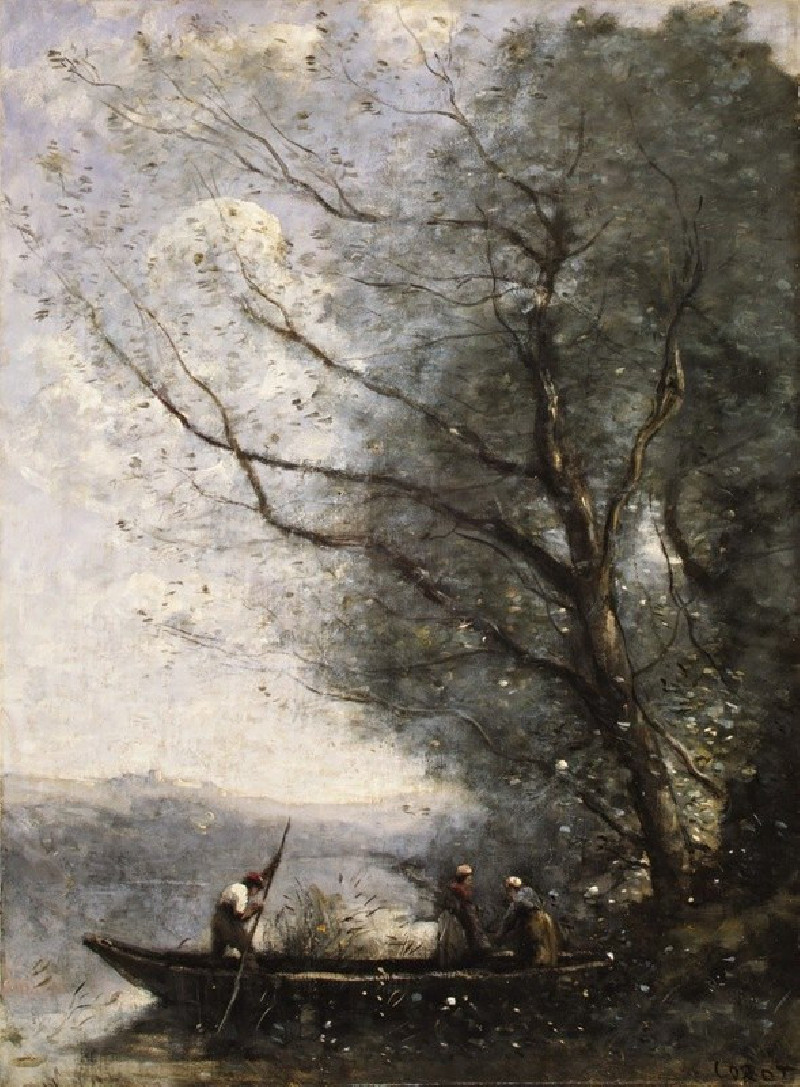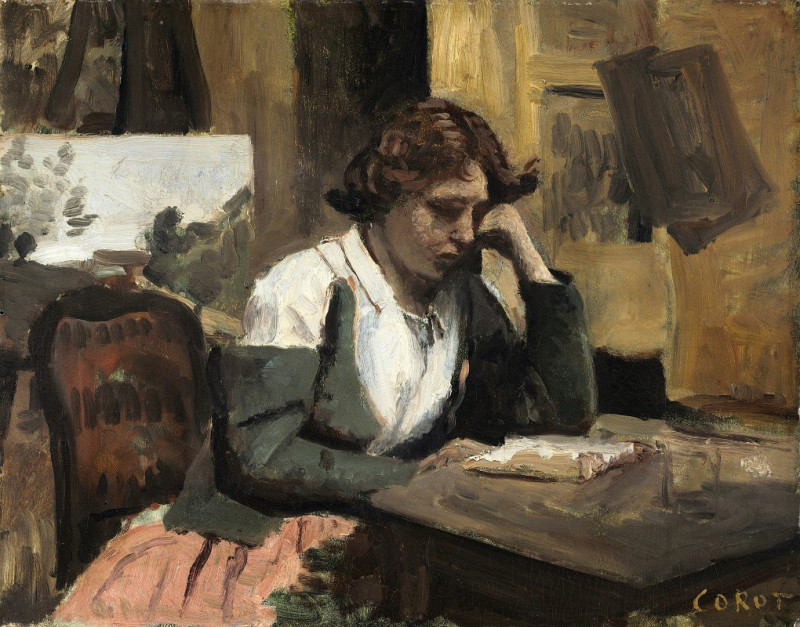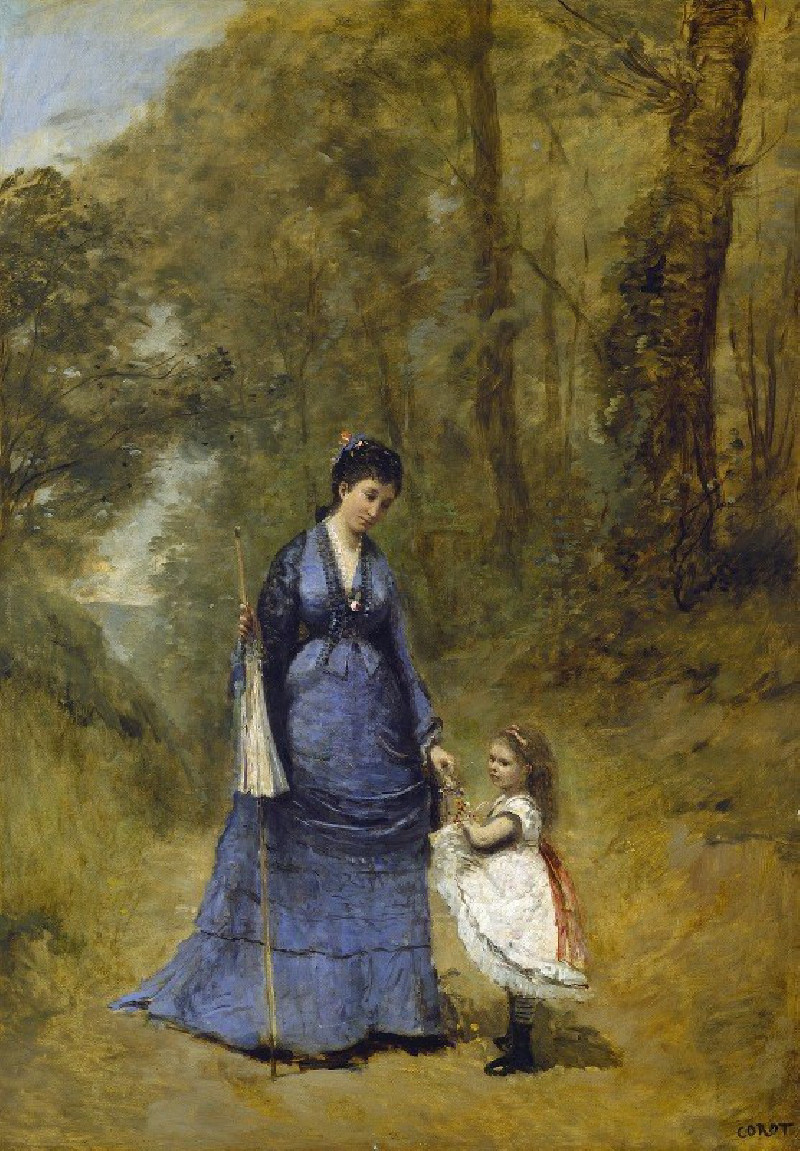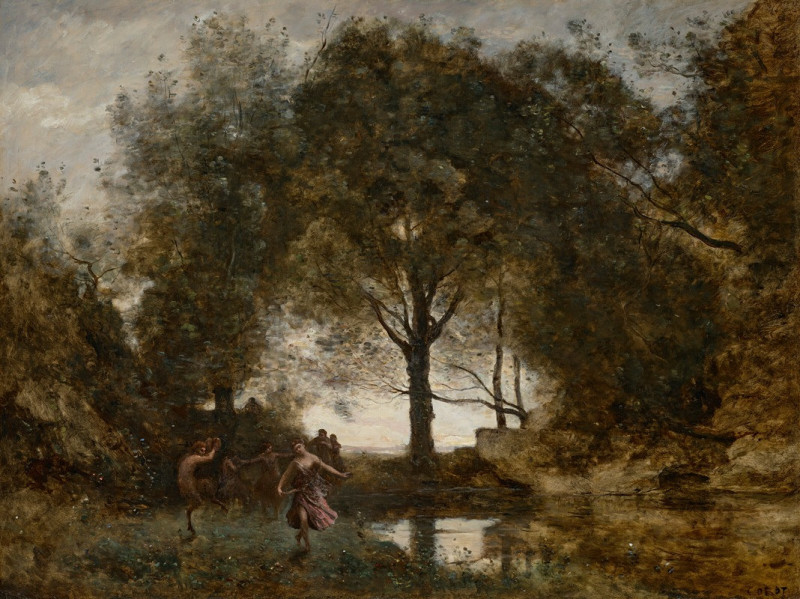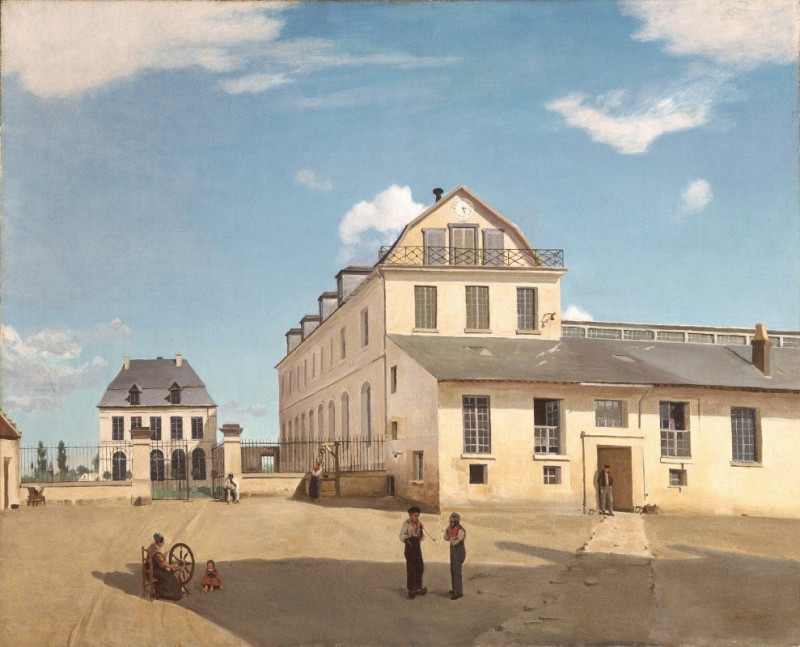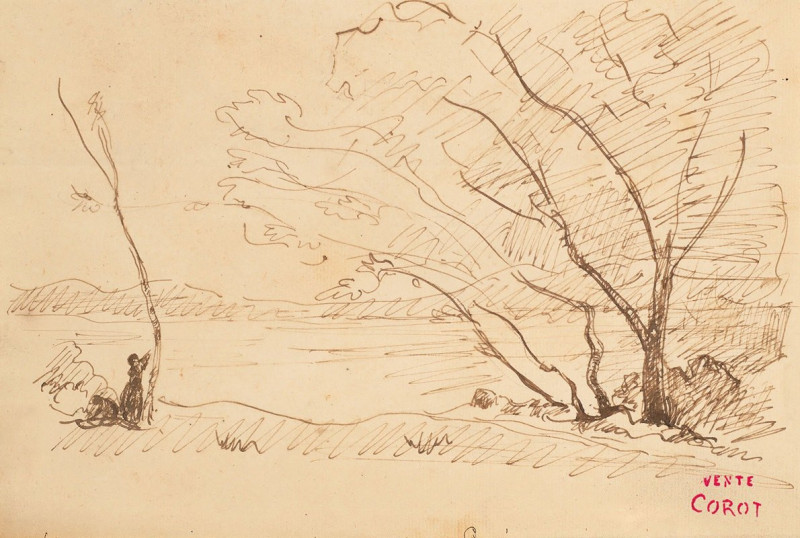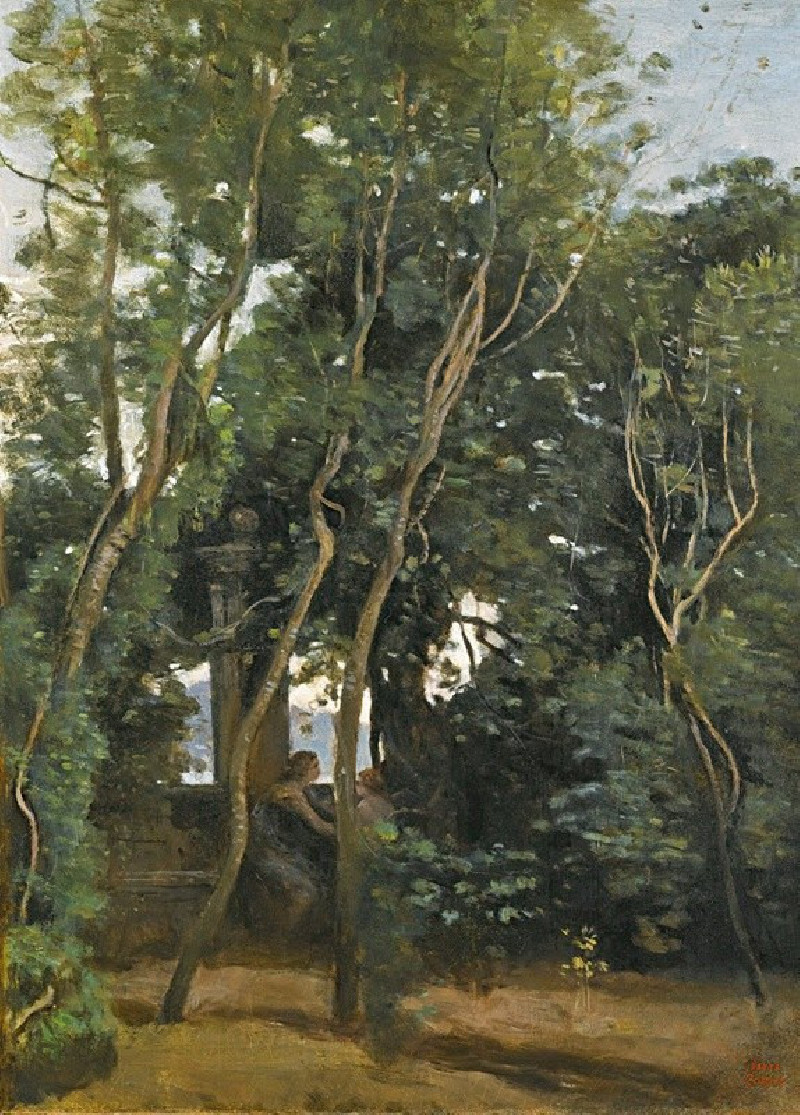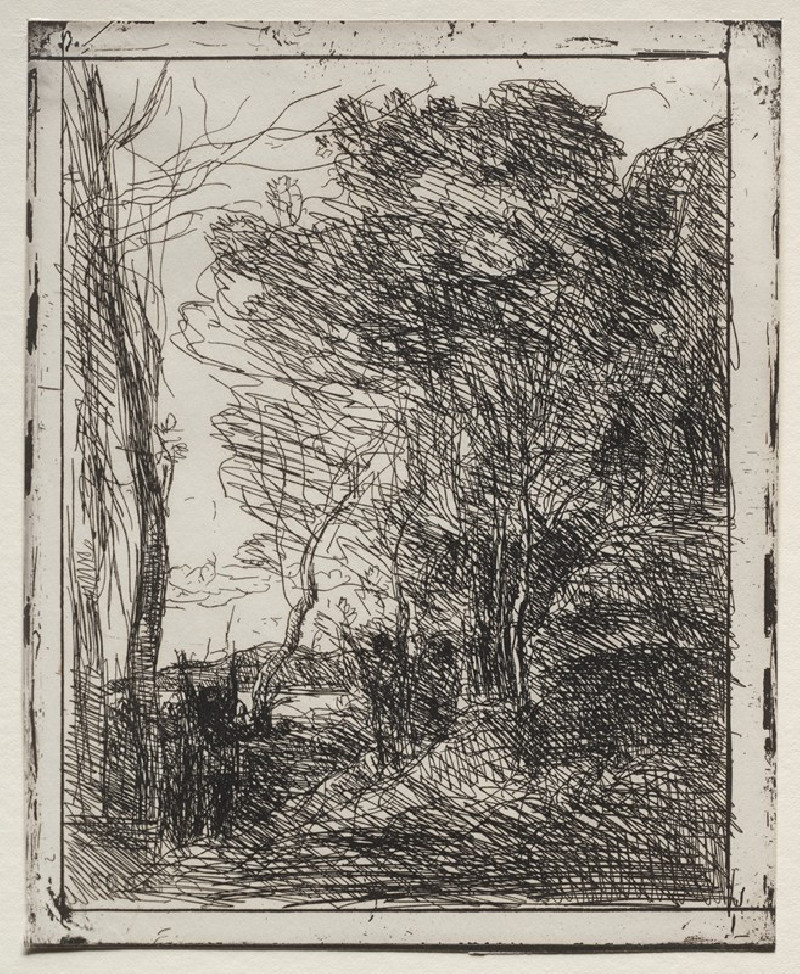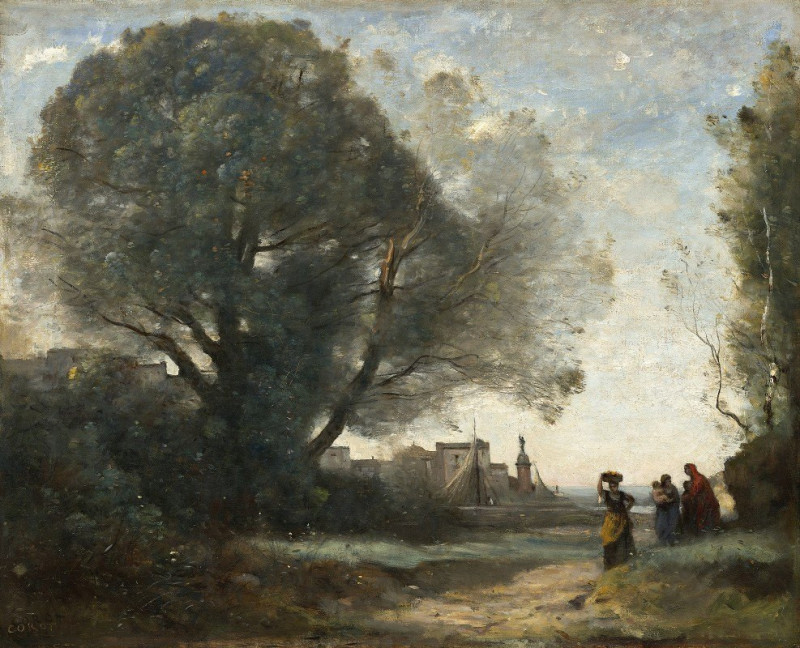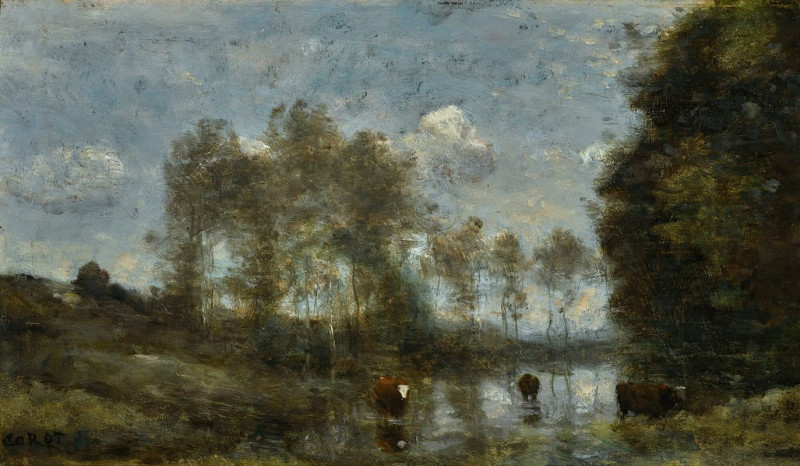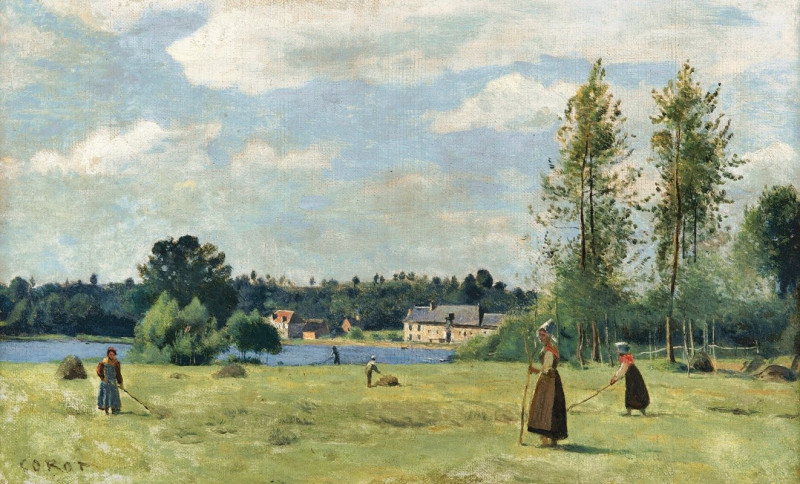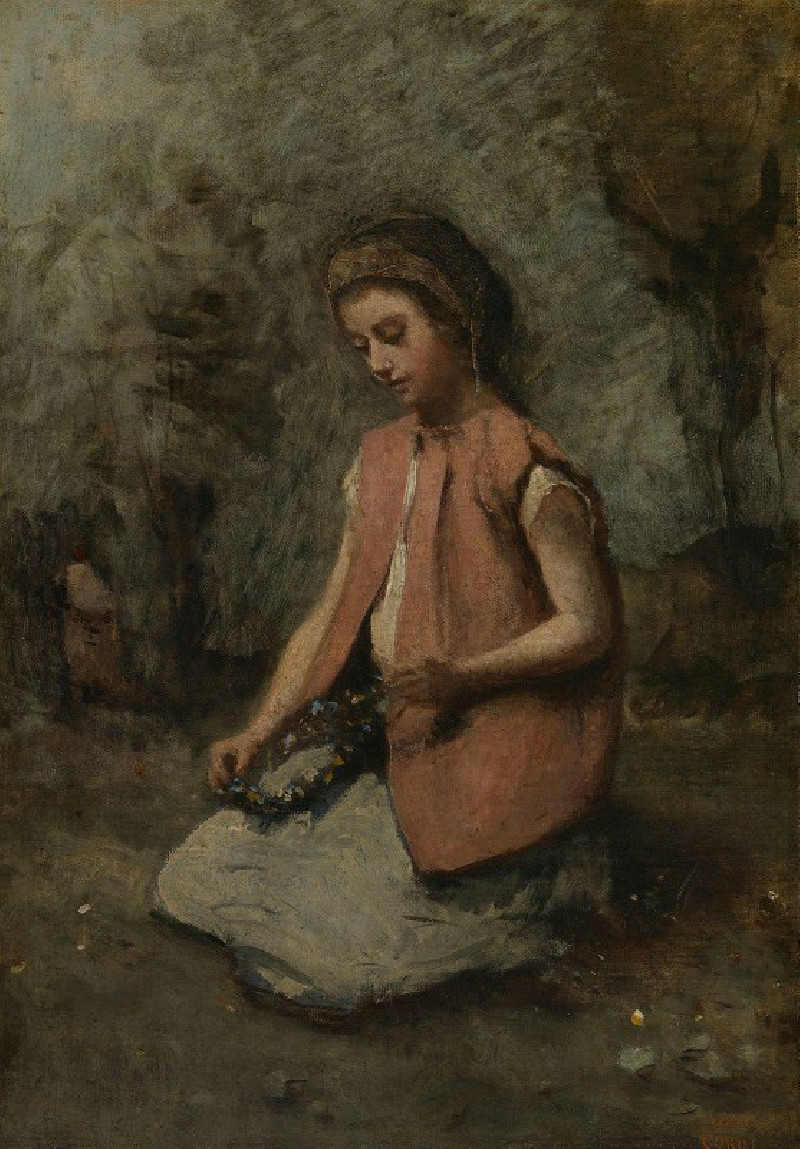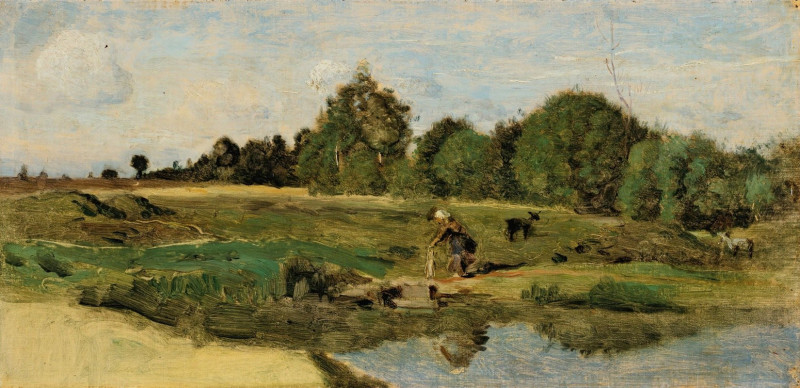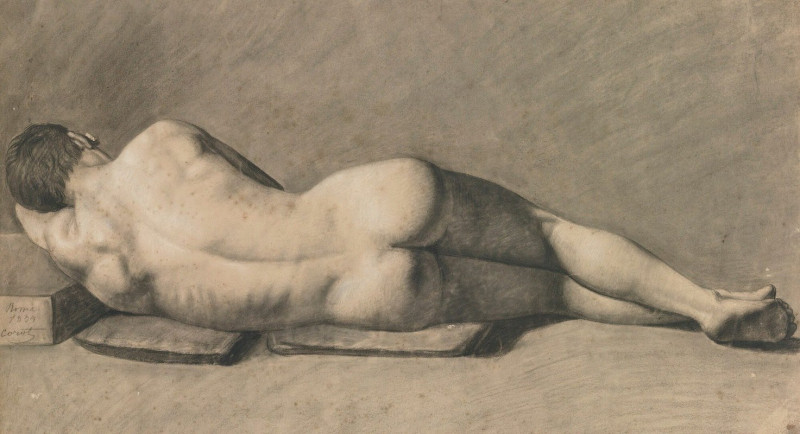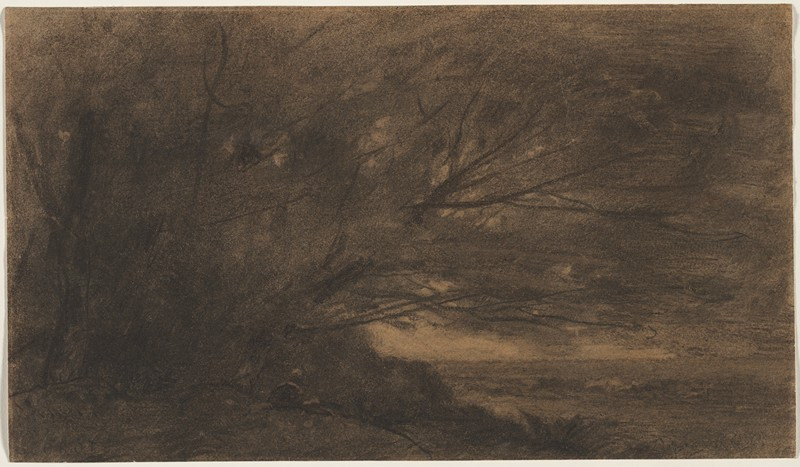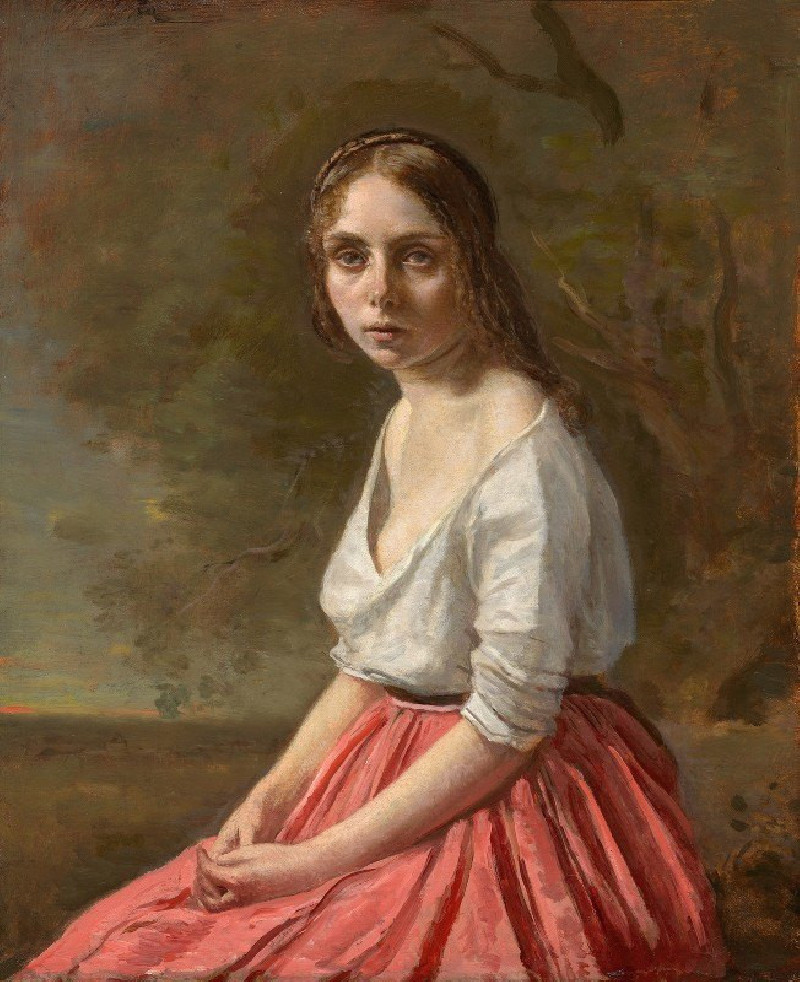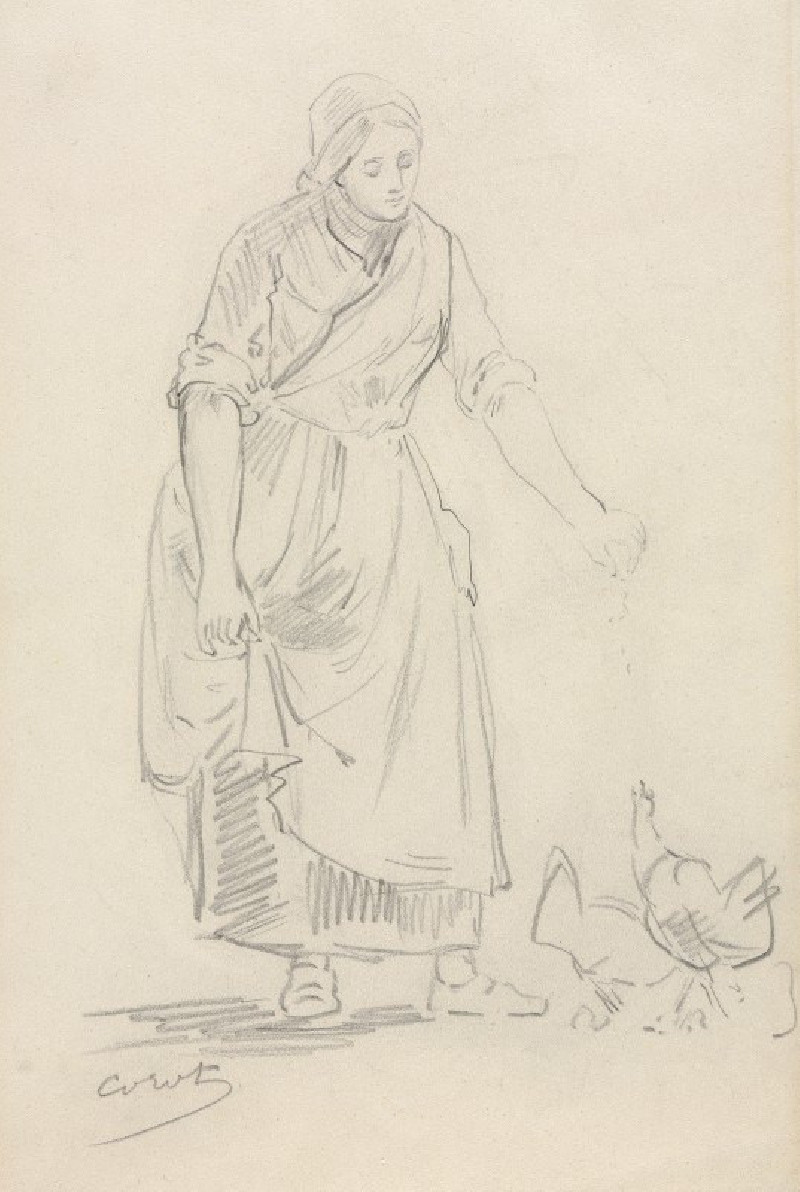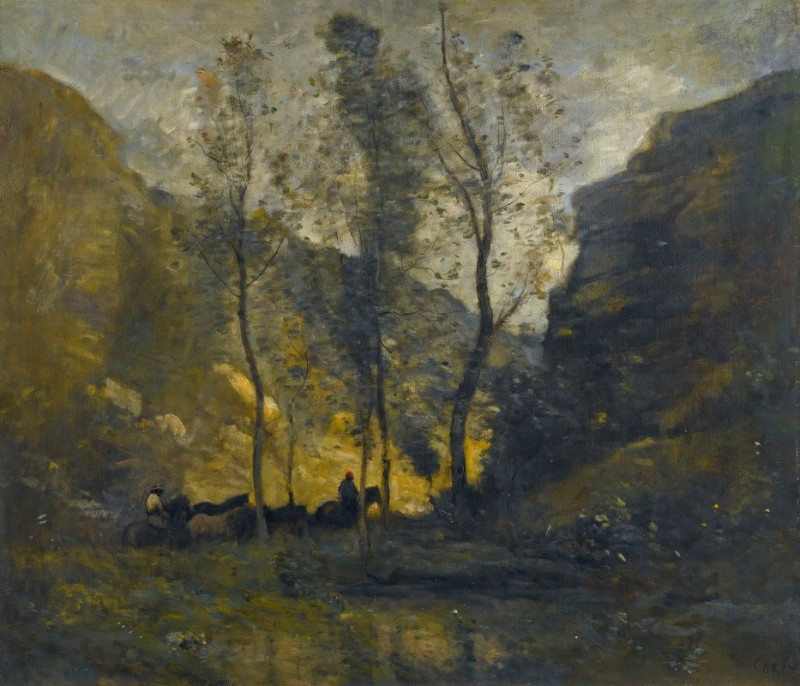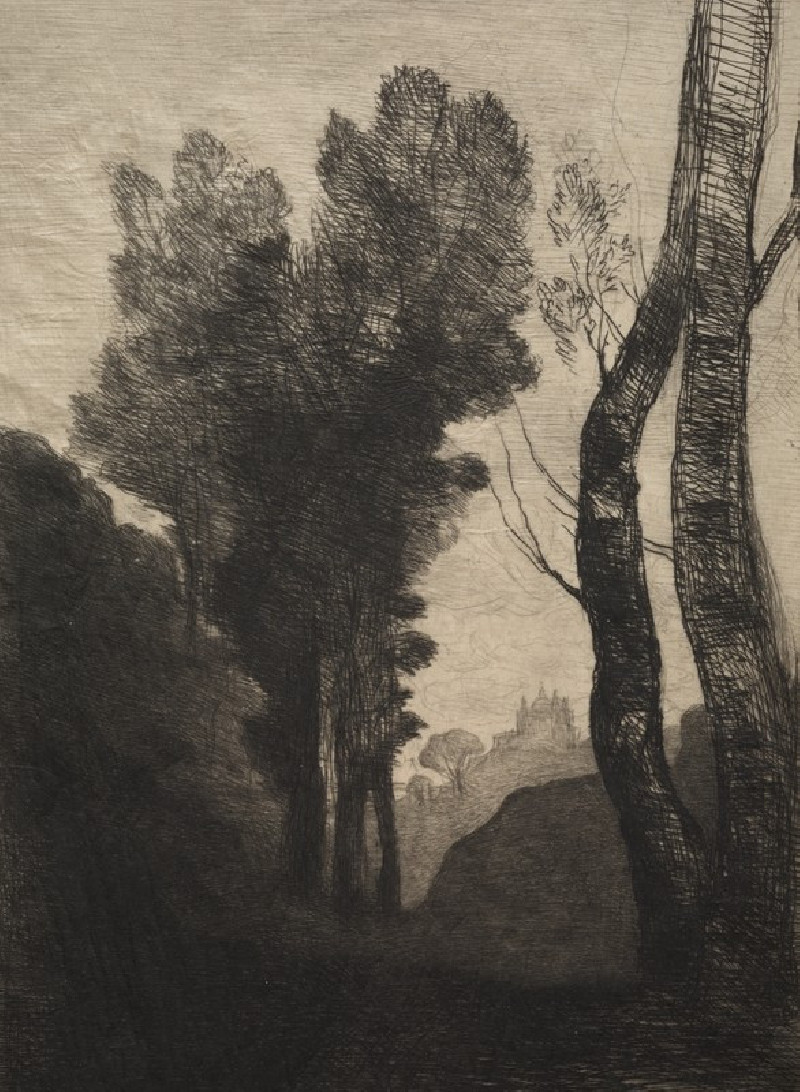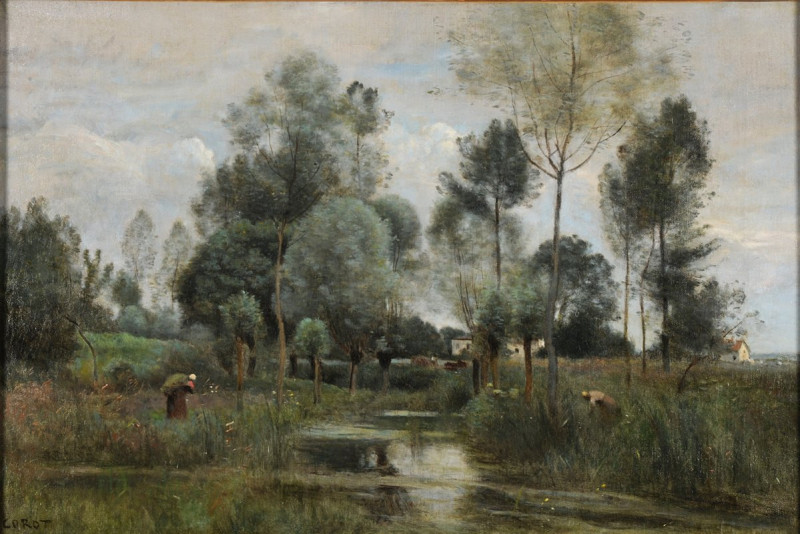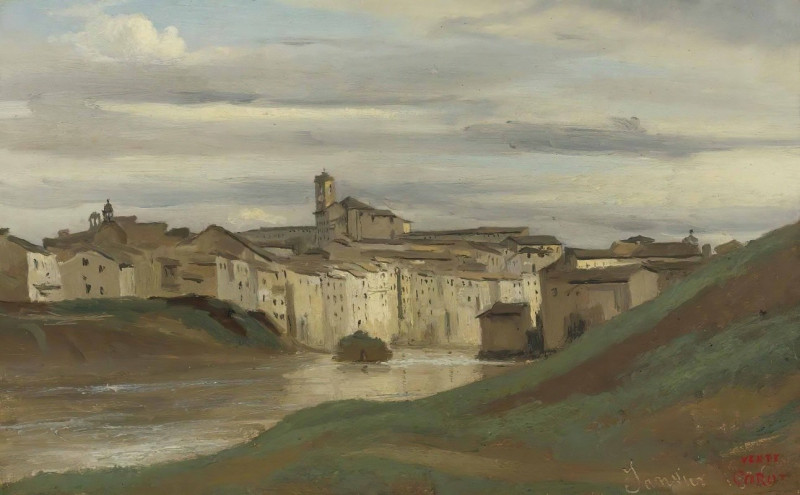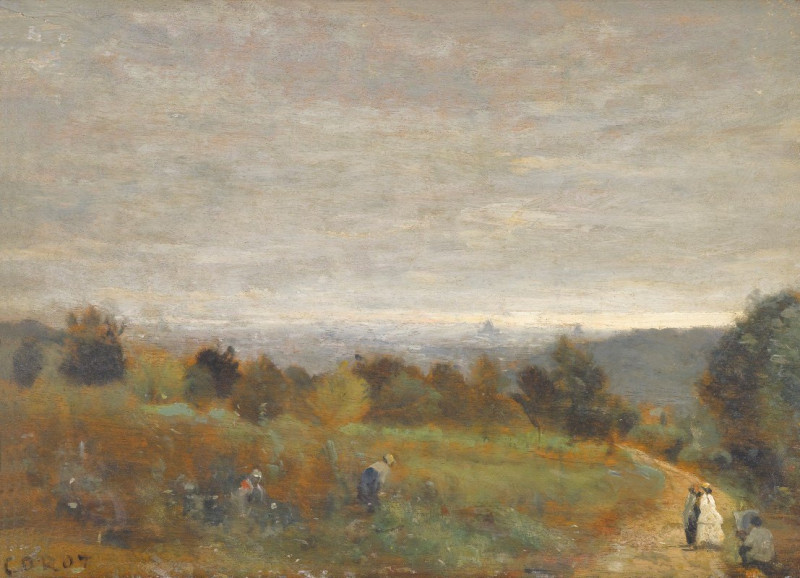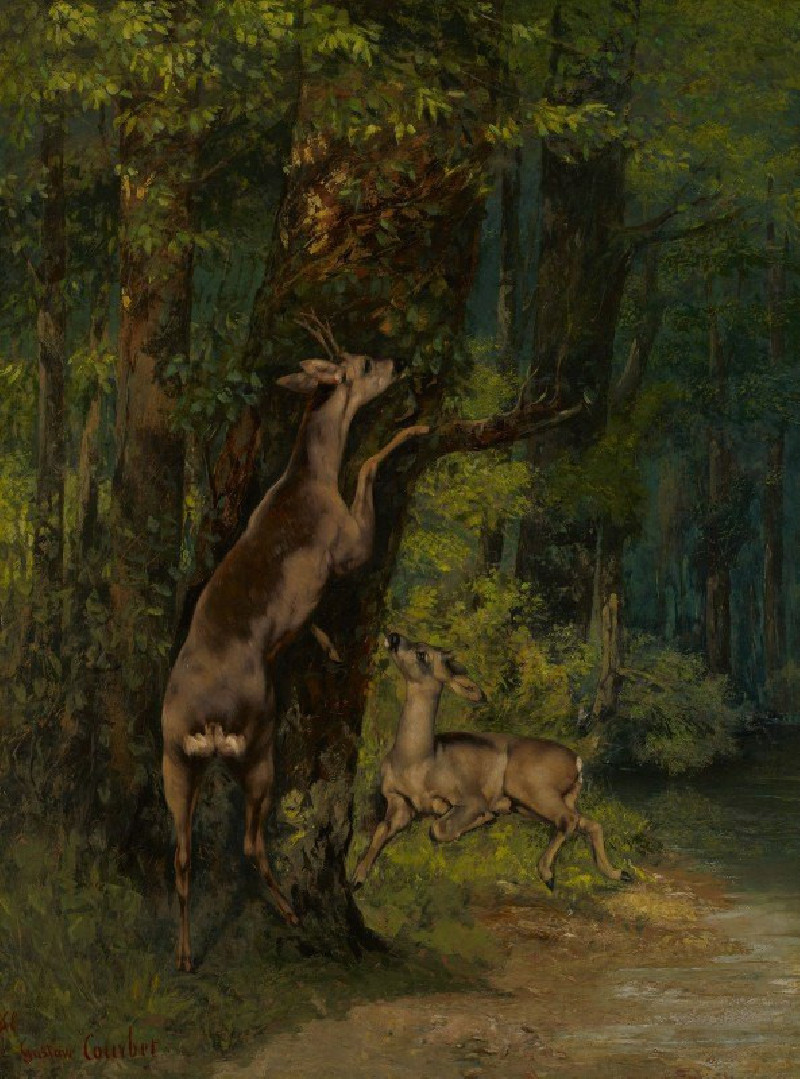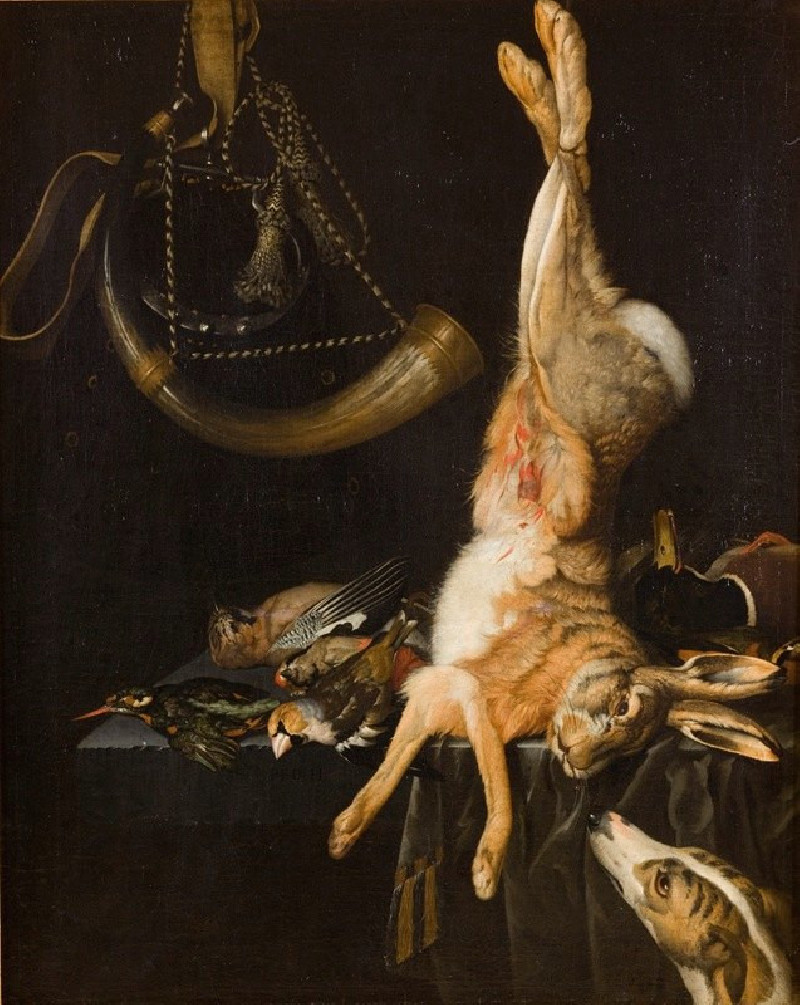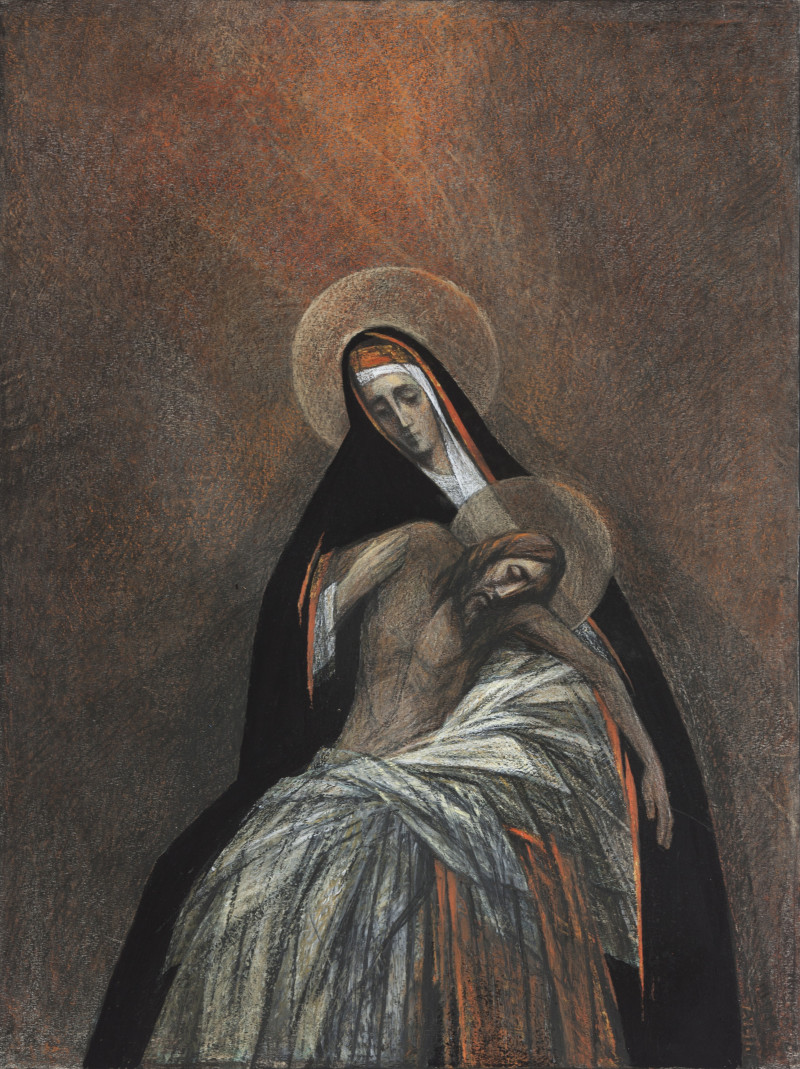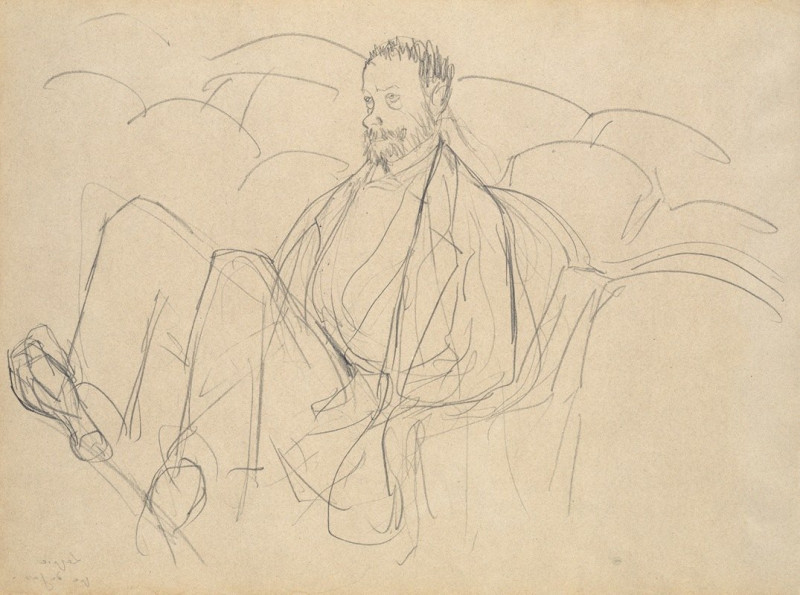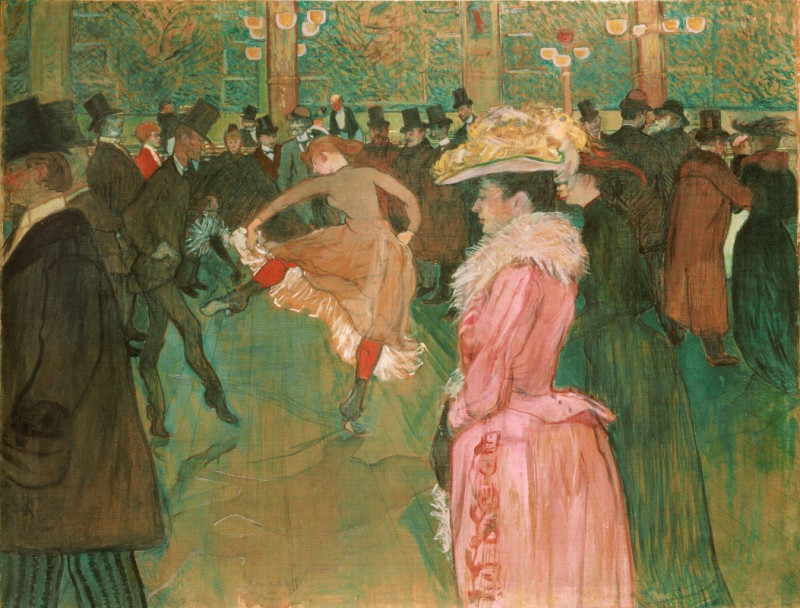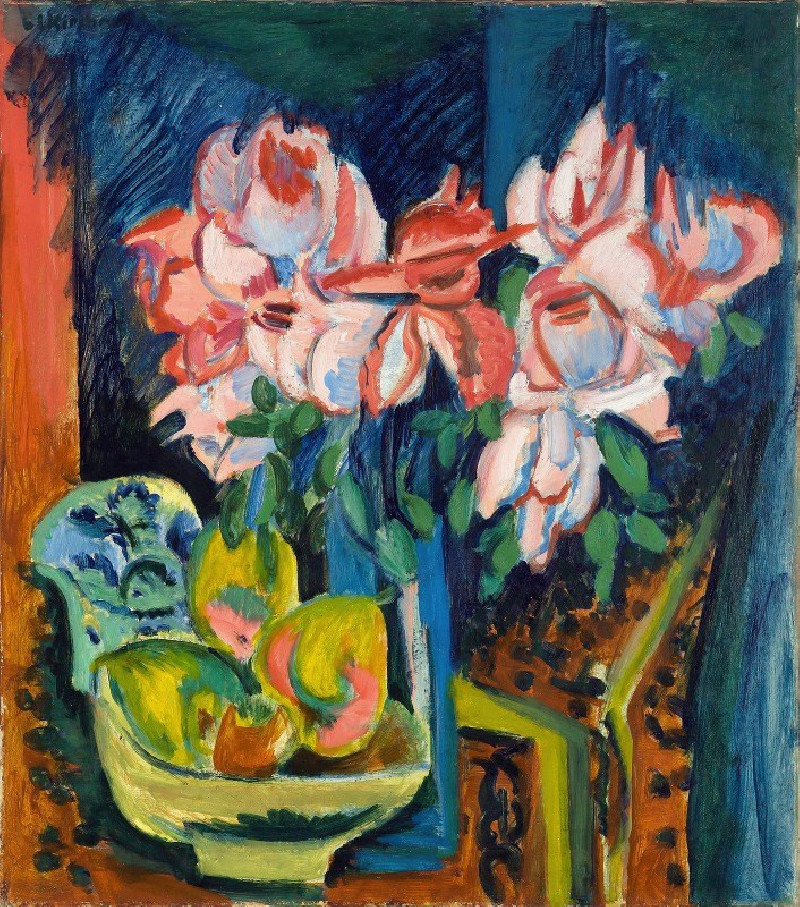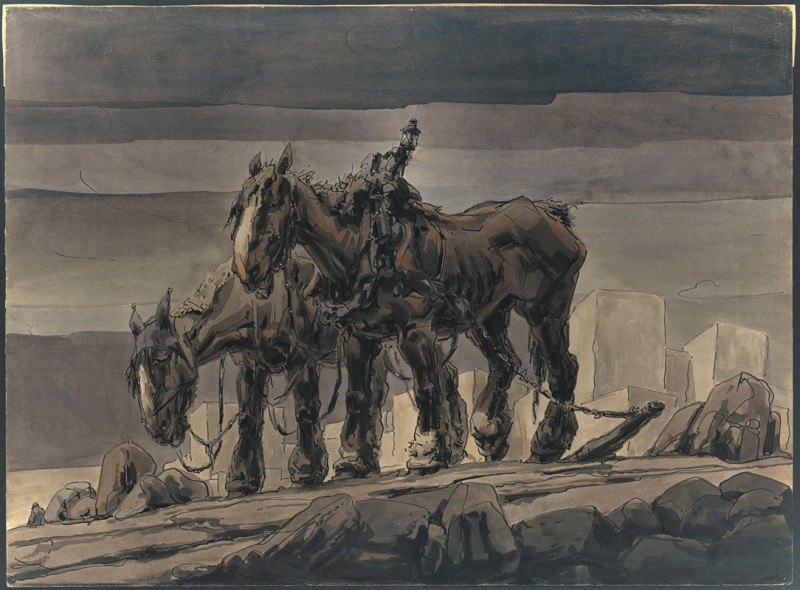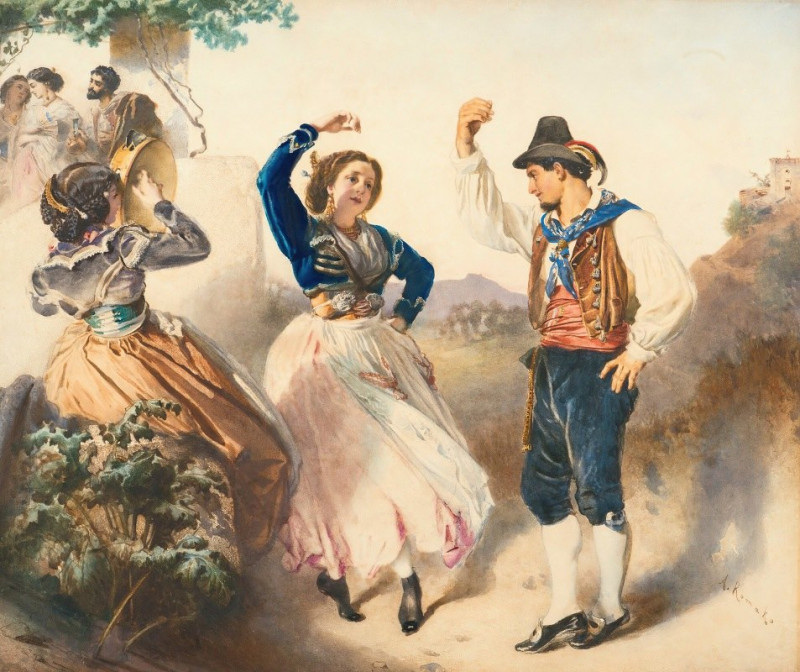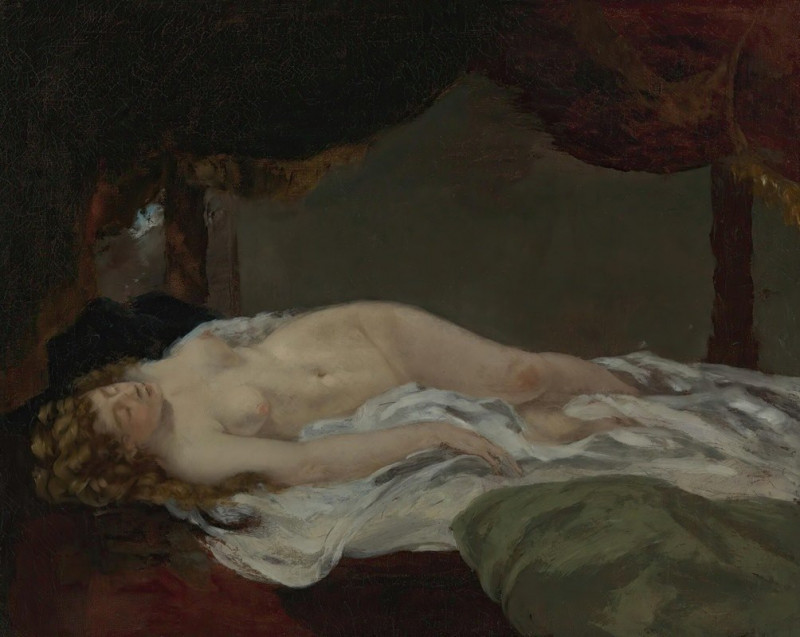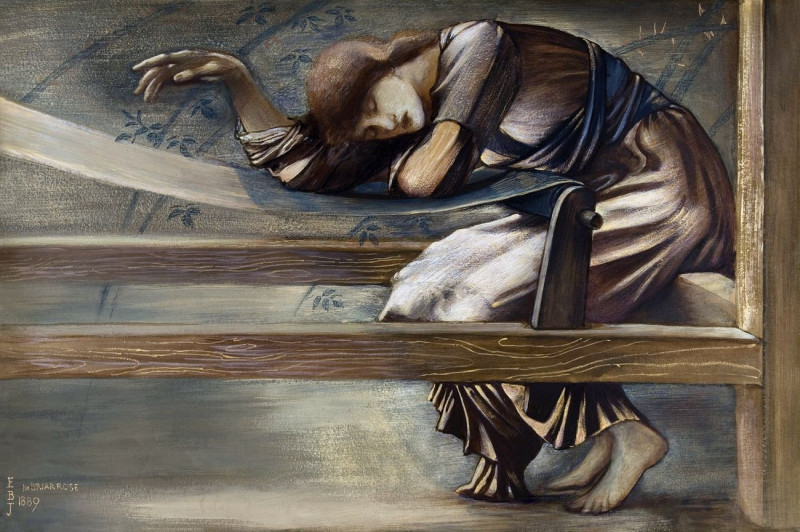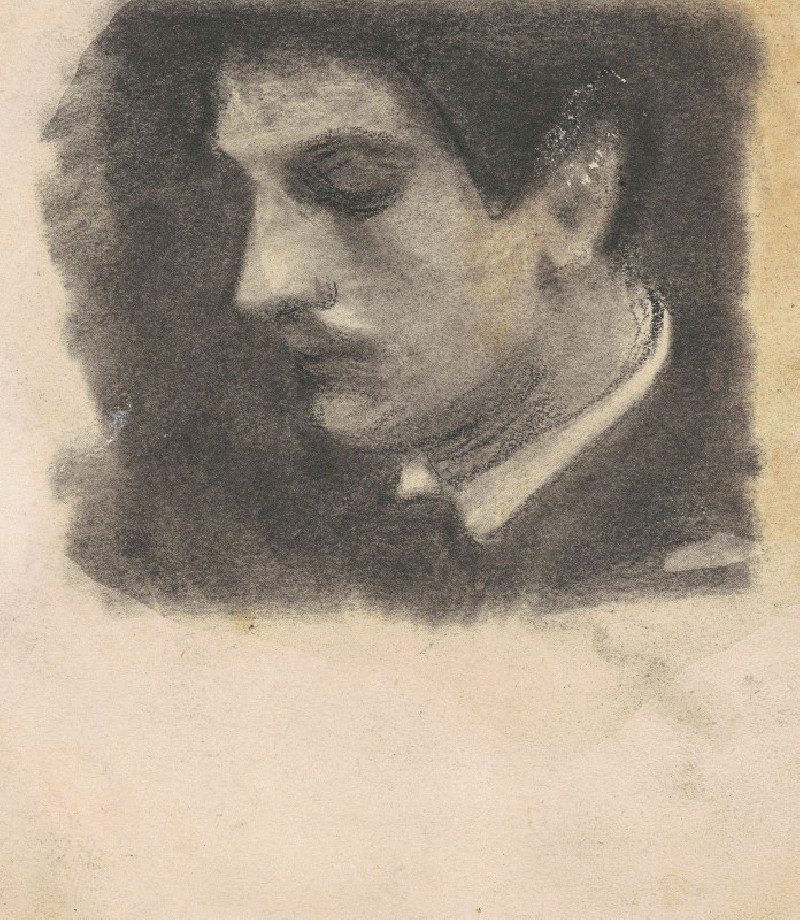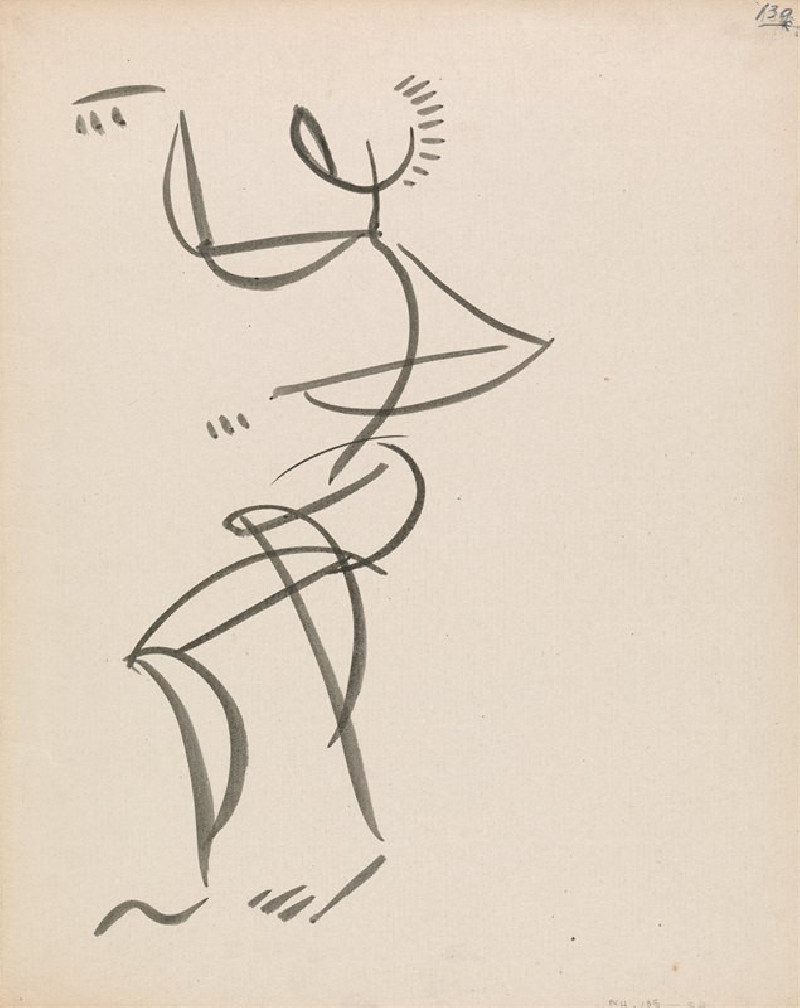Waterfall at Terni (1826)
Technique: Giclée quality print
Recommended by our customers
More about this artwork
"Waterfall at Terni," painted in 1826 by renowned French artist Jean-Baptiste-Camille Corot, is a breathtaking landscape that captures the serene beauty and dramatic intensity of nature. This exquisite painting depicts the famed waterfall located in Terni, Italy, known for its majestic cascade surrounded by lush vegetation.In the painting, Corot masterfully portrays the powerful rush of water cascading down a rugged cliff. The waterfall bifurcates into two streams, with the main one prominently sweeping downward, creating a dynamic visual focus. The surroundings are thickly wooded, with a variety of trees that Corot renders with a rich palette of greens and browns, translating the verdant, tranquil environment. The play of light and shadow is evident, particularly how the sunlight filters through the leaves and dances on the water, adding a shimmering quality to the scene. This forested area acts as a natural frame to the waterfalls, enhancing the sense of depth and the natural splendor of the setting.The sky above is a light, clear blue, barely visible through the dense foliage, suggesting a perfect, untouched wilderness. In the foreground, a subtle hint of a path suggests the presence of human visitors, though nature dominates overwhelmingly. Corot’s skill in capturing the essence and mood of a landscape is on full display, with his careful attention to detail and texture helping to convey not just the sight, but the soothing sounds of the cascading water."Waterfall at Terni" is not only an artistic representation of a natural site but also an invitation to contemplate the beauty and power of nature, encouraging viewers to reflect on their own experiences with the natural world.
Delivery
Returns
Jean-Baptiste-Camille Corot was a French landscape and portrait painter as well as a printmaker in etching. He is a pivotal figure in landscape painting and his vast output simultaneously references the Neo-Classical tradition and anticipates the plein-air innovations of Impressionism.


